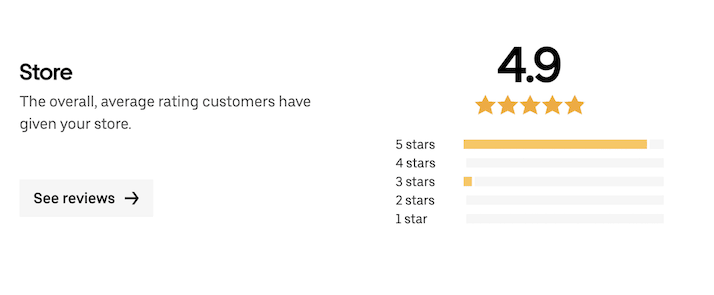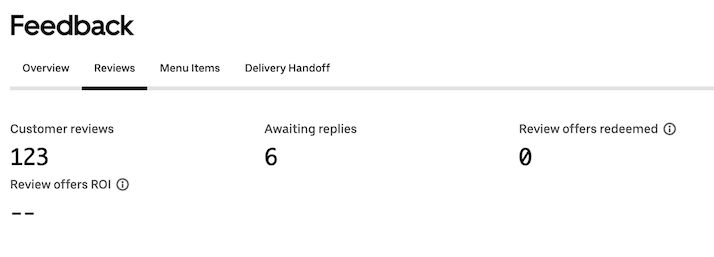この記事に記載されているサービスは、お住まいの地域で利用できない可能性があります。ご不明な点がございましたら、カスタマーサポートまたはアカウントマネージャーにお問い合わせください。
顧客満足度の測定方法
信頼される評判を築き、新規顧客にアプローチし、リピータービジネスを獲得するには、顧客満足度が不可欠です。価値あるものは、裏付けるデータがあってこそ構築することができます。顧客満足度の測定は、顧客がどの程度満足しているかを理解し、改善のための具体的な機会を特定するための重要なステップとなります。
この記事では、顧客満足度を測定する方法について、以下を含む包括的な概要を説明します。
顧客満足度を測定する指標
測定は通常、データから始まります。現在、ほとんどの企業は大量のデータにアクセスできます。課題は、どの指標が特定の目標に対して最も有用な洞察を提供するかを識別することです。顧客満足度を測定するために考慮すべき主な指標は、いくつかの主要なカテゴリに分類できます。
調査データ
One of the best ways to gain data about how your customers feel is to ask them through surveys. Common survey options for gathering customer satisfaction data include:
→ Customer satisfaction score (CSAT)
The CSAT score is a survey result that measures how satisfied a customer is with your company. To find your CSAT scores, provide customers with a survey that asks them to rate how satisfied they are with your products or services on a particular scale. You could choose a numerical scale (like 1 to 10) or use emojis (😢to 😃).
CSAT scores give you a way to turn something subjective—how happy or sad a customer is—into a quantitative metric. By taking the average of all responses, you gain a snapshot of how well you’re doing with customers.
One shortcoming of the CSAT is that, on its own, it doesn’t provide much information about why a customer feels the way they do about your brand. But by using CSAT scores to gain a general sense of how your customers feel, you can determine the next steps toward understanding what’s behind those feelings and how to improve them.
→ Net Promoter Score (NPS)
The NPS gauges how happy a customer is with your brand by asking how likely they are to recommend you to a friend or colleague. To find your NPS, send customers a survey that asks them to provide a rating of their likelihood to recommend you to others, generally on a scale of 1 to 10.
As with the CSAT score, the NPS helps you translate subjective feelings of loyalty toward your brand into numerical data that’s easy to understand. It’s a good companion to the CSAT score to help you gain further insights into how happy customers truly are. Being satisfied for their own sake is one thing, but liking you enough to rave to their friends about you suggests a stronger sentiment.
→ Customer effort score (CES)
The CES helps you measure whether customers find a particular aspect of doing business with your brand difficult. To collect this score, you provide customers with a survey right after they complete an action. The survey asks how easy or difficult they found that action. You can use the CES to measure ease of use for any aspect of the customer’s journey—a sales inquiry, the checkout process, a customer service experience—anything you feel may impact customer satisfaction.
As with the other survey scores, the main potential downside of the CES is that it depends on customer reporting. You have to ask customers to exert more effort to provide that feedback, which some won’t bother doing. Those who do will help you gain data that you can extrapolate from to estimate how others feel.
行動データ
Analytics that help you understand customer behavior can be another good indicator of customer satisfaction. Below are a few types of behavioral data worth tracking.
→ Customer retention rate
Your customer retention rate is the percentage of customers you’re able to keep over a set period of time. To find your retention rate, select a specific time frame, such as a month or a year. Determine the number of existing customers you had at the beginning of that time period (E), along with the total number of customers you had at the end of that time (T). Then figure out how many new customers you added in that same time frame (N). Once you have those values, the equation is:
This metric can be tricky for businesses that don’t offer a subscription product or loyalty program, as there may be no clear moment of “cancellation” to let you know when you’ve lost an existing customer. To help find your customer retention rate in that case, you can define what counts as an existing customer based on typical order frequency.
→ Customer lifetime value (CLTV)
CLTV measures how much you anticipate making from each customer over the entire length of your relationship. CLTV helps you quantify the value of earning customer loyalty by applying a long-term view to what each customer you gain is worth to you. To find your CLTV, calculate the average value of each customer you earn for a set period of time. Then multiply that number by the average (or predicted) customer life span. The equation for this is:
For example, if a grocery customer typically makes weekly orders worth an average of $100 each, their value in a year would be $5,200. If you can keep their loyalty for 10 years, their estimated CLTV would be $52,000. That really puts into perspective how valuable earning customer loyalty is.
One limitation of the CLTV metric is that it’s an estimate. A lot of unpredictable factors influence how long a customer will do business with your company and why, so you’re reliant on guesswork here. Nonetheless, it helps provide a good idea of what to expect.
→ Abandonment rate
Abandonment rate measures how many customers give up on an action before completing it. For businesses, there are 2 main instances where abandonment rate comes into play:
- Conversion funnel. If you break down the customer’s journey into the steps that lead to a sale, you can track at what point customers abandon that journey. A high abandonment rate at a certain point in the sales process can reveal a specific problem to solve. If customers often add items to their shopping cart without checking out, it might mean your checkout process is too onerous or shipping fees too high.
- Customer service. In customer service, the abandonment rate is the percentage of customers who give up on their customer service inquiry before a resolution. If a customer stuck on hold hangs up before reaching an agent, you can bet they aren’t satisfied. A high customer service abandonment rate points to issues with your customer service process to work on.
One issue to be aware of when measuring abandonment rates is that they only reveal when customers are abandoning a task and how many of them do so. You’ll need to do additional work to understand why it’s happening and what to do about it.
→ Churn rate
Churn rate measures how many customers stop doing business with your company. A high churn rate is a serious indication that customers aren't getting what they need from your brand.
To calculate churn rate, choose a specific period of time to look at, such as a year. Find the number of customers you had at the beginning of that period and the number you have now. If there has been a decrease, calculate how many fewer customers you have now. Then use this calculation:
Churn rate can be a useful metric for many businesses, but as with retention rate, it can be tricky to calculate depending on your business model. For a business that sells subscription products or items that regularly need to be replenished, like groceries, tracking it is fairly straightforward. Some other businesses may have a harder time identifying a lost customer versus one who’s between purchases. In that case, you can make an educated guess based on order frequency.
カスタマーサービスデータ
Every customer service experience someone has with your brand impacts their satisfaction with your business. Some good customer service metrics to consider are listed below.
→ First response time (FRT)
FRT is a customer service metric that tracks how long it takes between when a customer first reaches out to your support team and when you send a response. A customer stuck spending hours or days waiting for a response is unlikely to be satisfied with their experience. Tracking FRT provides you with an easy way to determine if your support staff typically gets back to customers in a timely manner or if it’s an issue you need to work on.
First response time is important, but getting a first response isn’t ultimately as important to customers as getting help solving their problem. So this metric is much more useful when you consider it in combination with other customer service metrics (such as the others covered in this section).
→ First contact resolution (FCR)
FCR is the percentage of customer service inquiries that your support team manages to resolve in their first response. A support issue that requires prolonged back-and-forth communication can be frustrating for customers and support staff. The higher you can get your first contact resolution, the more satisfied customers will be with your service. You can find FCR with this equation:
Some support inquiries will inevitably require more contact than this to effectively resolve. As such, prioritizing a satisfying resolution is more important than emphasizing a fast one alone. For simple customer issues, though, resolving them in your first response is a good goal to have.
→ Ticket resolution time (TRT)
TRT, sometimes called TTR (time to resolution), is the total amount of time it takes to resolve a customer service inquiry. Taken in combination with FRT and FCR, it helps provide a full picture of how quickly and effectively you’re solving customer problems. A long TRT suggests that your customer service team may need to rethink your processes and introduce efficiencies.
One limitation of customer service metrics related to speed is that they don’t necessarily track how happy customers are with their overall support experience. Using these metrics in combination with the other metrics and methods we cover here will help you gain a fuller picture.
顧客満足度を測定する方法
どの指標を追跡するかを決定することは、顧客満足度を測定する戦略の策定の一部にすぎません。また、顧客の満足度を理解するためにどのような方法を使用するかを決定する必要があります。最良の選択肢には、以下のものがあります。
分析ツール
この記事で説明されている指標の多くは、適切なソフトウェアツールで簡単にアクセスできます。データの一部を手動で追跡して計算することもできますが、代わりにテクノロジーに処理させる方がはるかに簡単です。また、これらの指標や指標計算に必要な値は一部は、すでにお持ちのツールで見つけることができるでしょう。
顧客満足度データを含む一般的なソフトウェア製品には次のようなものがあります。
POS システム。POS システムは、売上データの追跡や、解約率、定着率、CLTV を見つけるのに役立ちます。
顧客関係管理(CRM)ソフトウェア。CRM ソフトウェアは、カスタマージャーニー全体を通して顧客との関係を追跡するために役立ちます。顧客関係データの全体的な傾向を把握し、個々の顧客アカウントの詳細を追跡することができます。
カスタマーサービスソフトウェア。このタイプのソフトウェアは、FRT、FCR、TRT などのデータ収集プロセスを自動化することができます。一部のサービスには、NPS と CSAT スコアを獲得するためのアンケート機能も含まれています。
サードパーティの配達プラットフォーム。配達エクスペリエンスは、顧客満足度を高めるために重要な役割を果たします。サードパーティの配達プラットフォームは、多くの場合評価、レビュー、顧客維持率などの分析を提供しています。この機能を使用すると、注文に対する顧客満足度を追跡できます。
面談
顧客の本当の気持ちを理解する上で、対話に勝るものはありません。指標から得られるインサイトにニュアンスや詳細情報を追加するには、顧客との面談を設定しましょう。貴店と関わった経験のさまざまな側面について、どのように感じているか尋ねてください。会話は、データの背後にある気持ちと、その気持ちの背後にある理由を理解する手助けとなります。
ライブチャット
ライブチャットは、企業が販売やカスタマーサービスを提供する際にますます人気が出てきているチャネルであり、顧客満足度に関する追加のインサイトを提供することができ�ます。ライブチャットオプションを使用する注文者は、探しているものや質問を、追跡しやすい形式で直接伝えます。ライブチャットツールをプログラムして、ライブチャットエクスペリエンスに関するフィードバックを注文者に求めることもできます。
観察
ここで説明した方法のいくつかは、対面でのやり取りよりもオンラインでのやり取りに適用されますが、多くの企業にとって、実店舗における対面での体験は依然として顧客とブランドとのつながりの大きな部分を占めています。店内での顧客の行動に注意を払うだけで、その感情について多くを学ぶことができます。顧客が買い物中にどのように行動し、買い物体験について尋ねられたときにどのように回答するかを記録するように従業員を訓練しましょう。この方法は他の方法ほど現代的ではありませんが、同様に価値があります。
レビュー
多くの顧客は、レビューを残すことで、ブランドに対する印象を明確に伝えてくれます。これらのレビューを定期的に読んで、顧客の意見を把握する習慣をつけましょう。高評価のレビューは、貴店の行動が肯定的に受け入れられているかを確認するのに最適な方法です。否定的なレビューにも細心の注意を払い、対処すべき主な問題のいくつかについて情報を把握しましょう。
ソーシャルメディア
顧客は、ここで重要性を持つ主に 2 つの目的でソーシャルメディアを頻繁に利用しています。
- 不明点や苦情がある場合の追加のカスタマーサービスチャンネルとして
- ブランドに対する気持ちをフォロワーに伝えるチャンネルとして
お客さまは通常、最初の目的のためには、直接貴店に働きかけます。表明した問題、ならびにチームの対応方法を追跡して、追加のカスタマーサービスデータを作成することが可能です。
2 番目のカテゴリでは、ブランドや製品のメンションを追跡するソーシャルリスニングツールを使用して、人々の発言に関する情報を得ることができます。一部のソーシャルメディアツールでは、ソーシャルメディアの投稿に基づいて人々があなたのブランドについてどのように感じているかを理解するのに役立つ感情分析も提供しています。
アンケート
アンケートは、データの定量的価値と、インタビューやレビューなどの方法から得られる定性的な洞察の間に位置する、優れた中間の選択肢です。アンケートを使用して、CSAT や NPS のようなデータを取得するだけでなく、お客様の気持ちに関する詳細を提供する、自由回答式に近い質問をすることもできます。
以下、アンケートを送信するための一般的な方法を数種類紹介します。
- メール
- 電話
- テキスト
- 自社ウェブサイトで
- モバイルアプリ内で
貴店にはすでに、メールマーケティングやカスタマーサービス製品などのアンケート機能を含むソフトウェアツールが装備されているかもしれません。また、Google フォームや SurveyMonkey など、アンケートを提供するために特別に設計されたソフトウェアツールもあります。
顧客満足度を測定する方法:6 つのステップ
顧客満足度の測定が大きな主題であることは明らかです。自由に使用してよい、すべての指標と方法を確認した後は、作業を具体的で実行可能なステップに分割する方法を考えるかもしれません。続きを読んで、その手助けとなる 6 つのステップに分かれた計画について知りましょう。
1.目標の概要を設定する
優れた戦略は、達成したい目標を明確にすることから始まります。顧客満足度の測定から何を得たいかを具体的に設定しましょう。「顧客満足度の向上」のような一般的な目標を指定するだけでなく、「紹介ビジネスの拡大」のような、よりターゲットを絞った、測定可能な目標について考えてみましょう。
2.指標を定�義する
選択した目標に最も適した顧客満足度指標を決定し、それらを測定作業の焦点にします。これらの指標の現在の値を記録します。これが改善の出発点です。次に、進捗状況を測定するために使用する特定の時間枠を選択します。これにより、初期値と比較するための明確な最終結果を得ることができるようになります。この期間は、意義のある変更を追跡するために十分な長さが必要となり、少なくとも 1 か月、多くの場合 1 年ほどの長期となります。
3.調査を実行する
各目標達成のために、その時点のインテリジェンスを強化するための戦略を策定します。リピーターの満足度を高めることを目的としている場合は、上位の顧客にアンケートを送信したりすることができます。カスタマーサービスエクスペリエンスの改善に重点を置いている場合は、カスタマーサービスのやり取りが終了するたびに自動で実施されるアンケートを設定しておくとよいでしょう。 使用する方法は、達成したい目標によって異なります。そこから始めて、�現在の状況に関する知識を得るための最善の方法を見つけてください。優れた戦略として、定量的方法と定性的方法を組み合わせることをお勧めします。データは客観的な概要を提供し、定性的な情報はデータの背景にある理由を補完する手助けとなります。
4.データを分析する
調査から得たすべての情報は、時間をかけてじっくり評価するようにします。貴店の顧客や、その顧客が求めるもの、そして貴店に対して顧客が抱いている感情について、どんなことがわかるでしょうか?データから全体像が見えない場合は、先に進む前に、質的手法を調査プロセスに追加します。顧客に連絡して、なぜそのように感じるのかを尋ねましょう。レビューを見直して、把握している内容を補完するものかを確認したり、自由回答形式の質問を含むアンケートを送信します。
5.行動を起こす
学んだことをすべて活用して、顧客満足度を向上させるため貴店が取ることができるアクションアイテムを決定します。これには製品の改善、カスタマーサービスプロセスの強化、オンラインとオフラインの両方で顧客の利便性を高める方法を模索することなどが含まれます。データを参考にしながら、確実に顧客満足度を向上させられるよう前進しましょう。
6. 繰り返す
このプロセスが完了しても、まだ仕事が終わったわけではありません。顧客満足度の測定と向上は継続的に行われるものです。方法や目標を調整したい場合もありますが、これを継続的なシステムとするよう、努力しましょう。時間が経つにつれて、顧客が関心を持っていることをより深く把握できる履歴情報が得られ、学んだことを基にしてより良い結果を達成する手助けとなります
Uber Eats と提携し顧客満足度を向上させましょう
Uber Eats と提携している企業は、顧客満足度に関するインサイトを得るための追加機能を利用できます。
- 評価。配達が完了するたびに、注文者はサービスを評価するよう求められます。カスタマーエクスペリエンスのさまざまな側面に対する評価が確認でき、これには次のようなものが含まれます。
- メニュー商品。注文した商品と満足度がどのように関連しているかをよりよく理解するために、注文者が特定の商品やメニュー商品にどの程度満足しているかを確認します。
- 料理の受け渡し。配達パートナーがレストランとのやり取りにどの程度満足しているかを測定します。
- 全体的なサービス品質。注文ごとに付けられた総合的的なエクスペリエンスの評価が確認できます。


- レビュー。評価以外にも、注文者はレビューを提供してサービスの詳細について説明することができるため、注文者がなぜそのように評価するのかをレストランが理解する際の助けとなります。

- キャンセル率。Uber Eats には、指定された期間内に無効となった注文者の割合が表示されます。この機能を使用すると、注文が完了しなかった注文者の割合を確認できます。

- 注文者の維持率。Uber Eats には、全体的な維持率だけでなく、特定の期間に注文者が繰り返し注文する頻度も表示されます。

Uber Eats でできることは、顧客満足度に関するデータを受け取ることだけではありません。プラットフォームでは、店舗がレビューや評価に返答することもできます。顧客が満足していない場合は、状況を改善するために介入することができます。注文に満足している場合は、この機能を使用して関係を育み、ロイヤルティを高めることができます。
Uber Eats とすでに連携している事業者の方は、Uber Eats マネージャーにログインして [パフォーマンス] タブに移動します。そこから、指標、フィードバック、レビューを確認して、顧客満足度を理解し、改善することができます。Uber Eats との提携がまだの場合は、ぜひご登録をご検討ください。迅速で便利な配達オプションを提供して注文者の満足度を高めましょう。
サービス
サービス
テクノロジー
注文の管理
運営をシンプルに
売上拡大を図りましょう
お客さまにアプローチ
サービスをご利用の販売業者さま
サービスをご利用の販売業者さま
価格設定
参考資料
カスタマーハブ
詳細はこちら
Uber に問い合わせる
